【中文标题】互为对手的博物馆寻踪中国帝王的宝藏
【原文标题】Rival Museums Retrace Route of China’s Imperial Treasures
【登载媒体】纽约时报
【原文作者】DAVID BARBOZA
【原文链接】http://www.nytimes.com/2010/07/07/arts/design/07treasures.html?ref=china
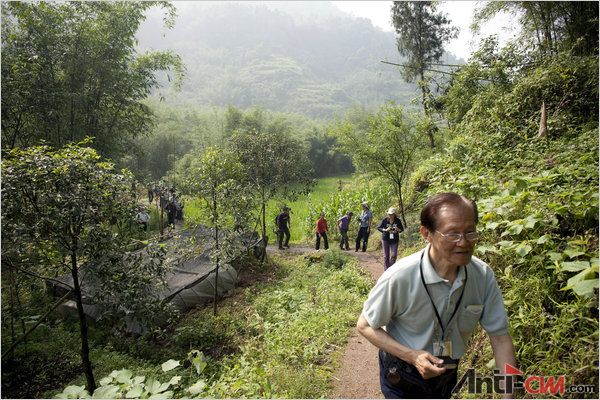
来自台湾和中国大陆的两家互为竞争对手的博物馆合作开展了一个项目,派遣学者追溯中国皇家在30年代和40年代的宝藏。这些宝藏在当时被妥善地保存,免受内战和日本侵略者的蹂躏,也躲过了无数的洪水、强盗和军阀。
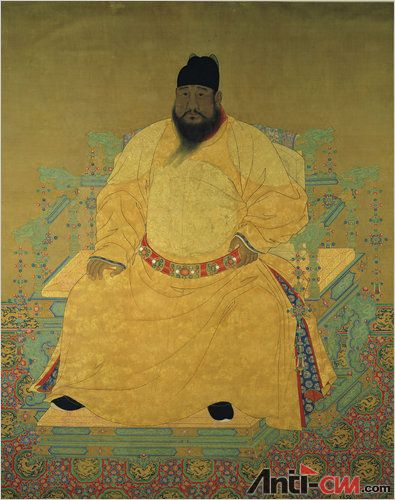
明玄宗画像,现收藏于台湾故宫。这个行动具有非凡的意义,因为组织者是两家相互对立的博物馆——北京故宫博物院和台湾国立故宫博物院,它们都宣称自己是这些文物的合法所有者。
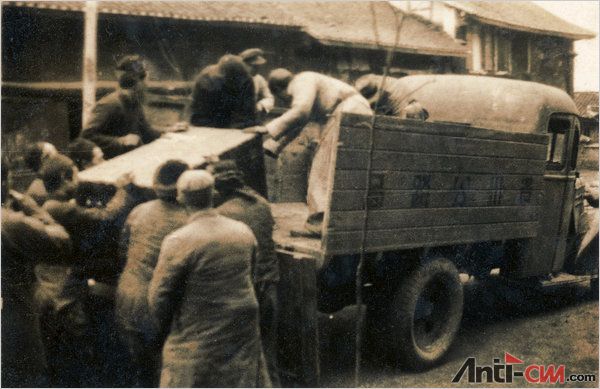
1937年,第一批皇家宝藏被转移。
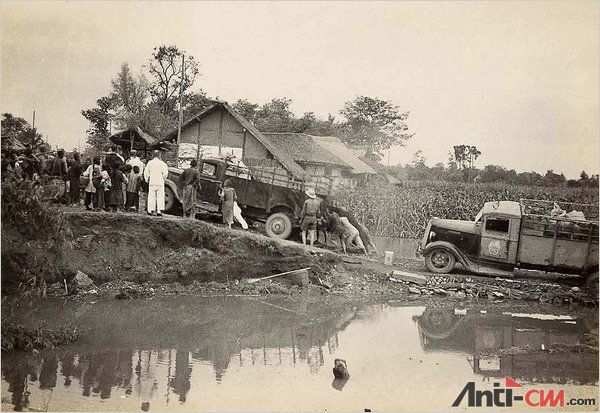
这张照片显示出,皇家宝藏在前往隐藏处的转移过程中充满了艰辛。
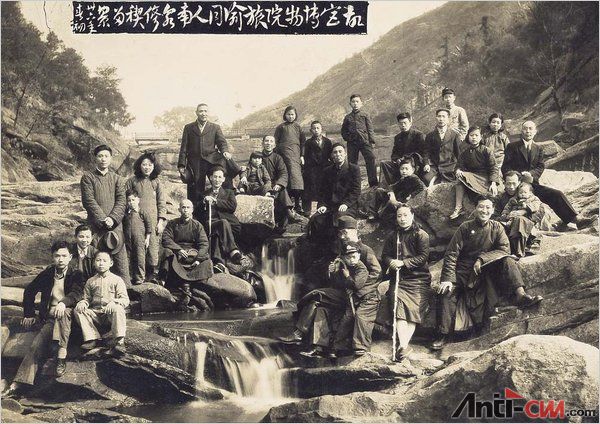
故宫博物馆中参与将文物转移到重庆的工作人员。

上个月,一队学者来到重庆周边的农村地区,走进山区深处,宝藏被存放在当地农民的家中。

在飞仙岩这个河谷中,中国最伟大的艺术珍品就在类似这样的泥砖房子中保存了一年。
上个月的一个闷热的上午,一位白发苍苍的向导吃力地走在一条泥泞的小径上,他把一队学者领到这个中国西部城市郊外的一片竹林中。就在这里的几个大木棚中,曾经保存着一大批中国皇家的宝藏。
当地博物馆的工作人员胡长建说:“那些东西大约就是存放在这里。”他指的是超过100万件来自北京紫禁城的文物,包括几个世纪前的绘画、书法、玉器和瓷器。“我们认为他们在我们后面这片地方掘洞储藏这些宝物。”
与学者团队同行的摄影师和纪录片拍摄人员记录下现场的景象。这些学者们手握笔记本,在山头上上下下地寻找这些洞穴。
这些来自中国大陆和台湾的学者在参与一个为期两周的非同寻常的搜索项目,他们的任务是追溯中国皇家在30年代和40年代的宝藏运输路线。这些宝藏在当时被妥善地保存,免受内战和日本侵略者的蹂躏,也躲过了无数的洪水、强盗和军阀。
这个项目之所以非同寻常,是因为组织者是两家相互对立的博物馆——北京故宫博物院和台湾国立故宫博物院,它们都宣称自己是这些文物的合法所有者。
最早的北京故宫博物院在1949年被一分为二——其员工和藏品都被分开。当时的国民政府被共产党击败后撤退到台湾岛,带走了数千名支持者和大量和博物馆藏品。
几十年来,双方一直为这些被分开的宝藏的所有权问题上争论不休。但是在近几年,两个博物馆开始进行跨海合作,联合举办了一系列令人瞠目结舌的展览。在这个夏天的学者之行问题上,双方讨论的焦点并不是统一,而是对于了解历史重大事件的共同渴望,这些宝藏如何存放?是什么造成了其最终一分为二?
北京故宫博物院副主任李文儒说:“我们对这个事情有一个大致的了解,但是不知道细节。在战争期间,100多万件文物通过陆路、水路、空中运输了1万公里,没有一件丢失。这是一个奇迹。”
当年博物馆的员工把这些文物藏在地堡、洞穴、寺庙、仓库,甚至私人家中,并守卫了16年。这些人都已经去世,但是其中一些人的后代受邀参加了这次旅行。
72岁的庄灵说,他的父亲是守卫这些皇家宝藏的一员,曾经为这些文物编辑目录。他回忆起自己孩童时期在重庆郊外的山区与这些人一起旅行和生活的事情。
他说:“天气好的时候,他们会把一些绘画、书法作品和书籍拿到外边来接触一下新鲜空气,因为洞里非常潮湿。我还记得见过一些风景绘画作品。”
这些文物中的绝大部分都是宋朝(960-1276)和清朝(1644-1911)最后一个短暂在位的皇帝溥仪之间的中国帝王所收集的。清朝破落之后,帝王家族保留了这些宝藏。(1931年,溥仪家族愿意以4百万美元将这些文物卖给美国工业家和收藏家J. P. Morgan。在其下属收到电报后不久,Morgan就去世了。)
1924年,政府把帝王家族驱逐出紫禁城,并宣布文物为国家财产,在此基础上建立了新的故宫博物院。
日本在1931年入侵中国北方,并威胁进攻北京,中国政府害怕这些文物被摧毁或被劫掠,因此在1933年初,用19000多个木箱把这些文物南下运到战时的首都——南京。1937年,在日本人攻陷南京之前的几天,这些文物又被分为三批,藏在三个地点。其中一些最珍贵的文物就藏在战时首都——重庆。
上个月,这个潮湿、多山的城市是中国和台湾学者们探宝之旅的第七站。他们挤在一个废弃的银行地窖中,这里是部分宝藏的储藏地(现在存放的都是缝纫机)。他们参观了原中央图书馆,那里曾经在战时展出部分宝藏。他们还跋涉到一个曾经被认为是宝藏保险箱的旧仓库,有人和他们说,因为这个仓库紧靠一个佛教寺庙,所以不大可能遭到日本军队的攻击。
重庆的向导胡先生为藏宝记录添加了一些新的信息,他坦承自己已经发现了仓库所在地的4个储藏室中的3个。几分钟之后,来自北京故宫博物院的李先生沿着一条铁道走到山坡上,发现了一个似乎是第4个储藏室所在的地点。
日本在1945年投降之后,这些宝藏回到了南京,但是它们的旅程并未结束。国民政府与共产党之间的内战开始于20年代,日本占领期间双方偃旗息鼓,日本投降后战争继续。1948年,随着奉行共产党路线的政府在北方建立,国民政府总统蒋介石下令把大部分珍贵的文物运往台湾,同时运走的还有这个国家的大部分黄金储备。
北京故宫博物院的中国艺术权威Alfreda Murck说:“皇家藏品中的大部分绘画作品都被运往台湾,”然而最终只有20%的文物到达台湾,“他们都是被精挑细选出来的。”
蒋的决定所分隔的不仅仅是这些文物。62岁的梁锦生说,他的父亲和祖父在30年代到40年代之间负责保护这些宝藏。但是在战后,梁先生的兄长和祖父跟随部分宝藏前往台湾,而梁先生的父亲留在中国后方,跟随其它文物回到北京。
梁先生说:“这次旅行让我了解到我父母一辈的人都做了哪些事情。”他在北京故宫博物院负责管理文物的目录,他是当年博物馆员工的第五代后人。
出于担心共产党的进攻和轰炸,这些宝物在台湾的洞穴中存放了多年,直到1965年台北故宫博物院开放。与此同时,北京故宫博物院也在50年代和60年代迎来一些参观者。这些宝物在两个地方都有极其重大的象征意义。
与Jeannette Shambaugh Elliott合著有《中国帝王艺术宝藏之旅》的David Shambaugh说,中国领导人长期以来把这些宝藏视为其权力的象征,即使共产党统治时期也是如此。文化大革命期间,红卫兵试图摧毁一切有关传统的东西,毛下令要保护博物馆。
乔治华盛顿大学的中国学者Shambaugh教授说:“每个朝代的统治阶级都用这些宝物来让自己的地位合法化,毛和共产党认为自己是5000年历史的继承人。”
两家故宫博物院都表示,双方并未讨论过是否会将这些宝物合在一处。在重庆的这次旅行中,参与者都小心翼翼地回避所有权的话题。北京故宫博物院的李先生说:“只有一个”故宫博物院,现在的两个博物馆其实“是一家”。
台北故宫博物院的楚慧良说:“双方都没有谈过这个话题,因为这不是我们能够解决的问题。”
博物馆官方坚持表示,文物的存放地点并不重要,重要的是它们被保存下来。两家博物馆准备在今年年底在北京举办一次联合展览,主题是皇家宝藏的探寻之路。他们还准备在2011年7月在台北举办联合展览,主要展出因国民党撤退而被分开的元代以后的古代绘画作品。
然而到目前为止,台北博物馆还没有把任何物品发往北京,而且似乎也并不打算这么做,直到北京政府正式表示不会抢走台湾的文物。尽管双方的合作是充满希望的,但是两家博物馆的官方均承认,这种合作是有限度的——至少目前如此。
原文:
Two rival museums, one from Taiwan and one from mainland China, are collaborating on a research project that has scholars retracing the journey of China's imperial treasures in the 1930s and '40s, when they were being safeguarded from the ravages of civil war and Japanese aggression, not to mention floods, bandits and warlords.
David Barboza writes: "The project is extraordinary because it was organized by rival museums, the Palace Museum of Beijing and the National Palace Museum in Taiwan, each of which claims to be the rightful home of the artifacts."
Left, a portrait of Emperor Xuanzong of the Ming dynasty, now in the National Palace Museum in Taiwan.
Some of the first batch of imperial treasures being transfered, 1937.
A photograph showing the difficulties the imperial treasures sometimes encountered on the road to their hiding places.
Members of the palace museum staff who helped move the artifacts to Chongqing.
Last month, the group of scholars traveled to a valley deep in the countryside outside of Chongqing, where the museum treasures were housed in farmers' homes.
In this valley of Feixianyan, the greatest art treasures of China were housed for a year in mudbrick homes much like this one.
CHONGQING, China — On a sweltering morning last month, a white-haired guide trudged up a muddy path, leading a group of scholars toward a bamboo grove on the outskirts of this western Chinese city. The site, he said, was where a large portion of China’s imperial treasures were once hidden inside several big wooden sheds.
“They were stored right about here,” Hu Changjian, a local museum official, said of the artifacts, an unparalleled collection of more than a million objects from the Forbidden City in Beijing, including fine paintings, calligraphy, jade and porcelain dating back centuries. He added, “We think they dug caves in the hills behind us to store some of the treasures.”
Photographers and documentary filmmakers traveling with the group of scholars recorded the scene, as the scholars, clutching notepads, scampered up a hill in search of caves.
The scholars, from mainland China and Taiwan, were taking part in an extraordinary two-week research project, retracing the routes taken by the imperial treasures in the 1930s and 1940s, when they were being safeguarded from the ravages of civil war and Japanese aggression, not to mention floods, bandits and warlords.
The project is extraordinary because it was organized by rival museums, the Palace Museum of Beijing and the National Palace Museum in Taiwan, each of which claims to be the rightful home of the artifacts.
The original Palace Museum in Beijing was split in two — its staff as well as its collection — in 1949, when the Nationalist government fell to the Communists and retreated to the island of Taiwan with thousands of supporters and a huge cargo of museum pieces.
For decades there has been debate about ownership of the divided treasures. But in recent years the two museums have begun to collaborate on exhibitions in a stunning show of cross-Strait cooperation. On the scholars’ journey this summer, the talk was not of unification but of shared history and of a common desire to understand the remarkable events that both preserved the treasures and eventually led to their division.
“We had a rough idea of how things happened, but we didn’t know the details,” said Li Wenru, deputy director at the Palace Museum in Beijing. “But we knew it was a miracle that in wartime over a million treasures were moved 10,000 kilometers, on roads, in water, by air, and nothing was lost.”
The museum staff members who protected the artifacts on that 16-year odyssey, hiding them in bunkers, caves, temples, warehouses and even private homes, have all died. But some of their children were invited to participate in this year’s trip.
Zhuang Ling, 72, says his father, who had been a cataloger of the collection, was one of the staff members charged with guarding the imperial treasures. He recalls living and traveling with them as a child, in the mountains outside Chongqing.
“When the weather was good, they’d bring the paintings, calligraphy and books outside to give them some fresh air because it was too humid inside,” he said. “I could even see some of the landscape paintings.”
The collection was put together by emperors, mostly in the centuries between the Song dynasty (960-1276) and the brief reign of Pu Yi, China’s last emperor, at the end of the Qing dynasty (1644-1911). After the Qing fell, the imperial family kept the treasures. (In 1913 the family offered to sell them to the American industrialist and collector J. P. Morgan for $4 million; Morgan died shortly after his staff received the telegrams.)
In 1924 the state expelled the imperial family from the Forbidden City, declared the collection national property and made it the foundation of a new Palace Museum.
But after Japan invaded north China in 1931 and threatened to move toward Beijing, the government, fearing the artifacts might be destroyed or carted off to Japan, shipped them, in more than 19,000 wooden crates, south to Nanjing, the new capital, in early 1933. Then, just days before the Japanese destroyed Nanjing in 1937, they were divided into three groups and sent into hiding along three separate routes. Some of the most valuable objects ended up here in Chongqing, the wartime capital.
Last month this humid, mountainous city was the seventh stop for the Chinese and Taiwanese scholars. They crowded into a rusted bank vault where some of the artifacts had been stored (it now houses sewing machines); visited the old central library, which had exhibited some of the treasures during the war; and trekked up to a warehouse that had been deemed safe for the treasures, they were told, because it was adjacent to a Buddhist temple and so unlikely to be attacked by Japanese forces.
Mr. Hu, the Chongqing guide, added new details to the record, even as he confessed to having discovered only three of the four storage rooms at the warehouse site. Minutes later Mr. Li, from the Beijing museum, followed a railroad track up a hill and discovered what appeared to be the fourth warehouse space.
After Japan surrendered in 1945, the treasures returned to Nanjing. But the journey was not over. Civil war between the Nationalist government and the Communists, which had begun in the 1920s and abated during the Japanese occupation, resumed. In 1948, with the Communists routing government forces in the north, Chiang Kai-shek, head of the Nationalists, ordered the most valuable treasures shipped to Taiwan, along with much of the nation’s gold supply.
“The majority of the paintings from the imperial collection moved to Taiwan,” said Alfreda Murck, an authority on Chinese art at the Palace Museum in Beijing, though only about 20 percent of the collection made its way there. “They chose very well,” she added.
Chiang’s decision divided more than just the collection. Liang Jinsheng, 62, said his father and grandfather helped protect the treasures in the 1930s and ’40s. But after the war, Mr. Liang’s brother and grandfather accompanied some of the treasures to Taiwan while Mr. Liang’s father stayed behind in China, following another part of the collection back to Beijing.
“This trip made me realize how much my parents’ generation did,” said Mr. Liang, who catalogs artifacts at the Beijing museum and is a fifth-generation staff member there.
In Taiwan the treasures were stored in a cave for years, out of fear that the Communists might invade or bomb the island; only in 1965 did the National Palace Museum of Taipei open. In Beijing, meanwhile, the Palace Museum had few visitors in the 1950s and ’60s. But the treasures had enormous symbolic value in both places.
David Shambaugh, who with Jeannette Shambaugh Elliott wrote “The Odyssey of China’s Imperial Art Treasures,” said Chinese leaders had long viewed them as a means of validating their power, even under Communism. During the Cultural Revolution, when Red Guards tried to destroy anything associated with tradition, Mao ordered the museum protected.
“Every successive regime used the collection to legitimize themselves with elites,” said Professor Shambaugh, a China scholar at George Washington University. “Mao and the Communists saw themselves as the inheritors of 5,000 years of history.”
There has been no dialogue between the two museums about whether the treasures should be unified in one location, officials of both institutions say. And in Chongqing and elsewhere on the trip, the subject of ownership was carefully avoided. “There’s only one” palace museum, said Mr. Li of the Beijing museum, in that “the two are one.”
And Chu Huiliang of Taipei said, “Both sides don’t talk about this issue because we’re not the ones who can resolve it.”
The museum officials insisted that it wasn’t important where the treasures were kept, only that they were preserved. The two museums are teaming up for a joint exhibition in Beijing later this year, about their travels following the route of the imperial treasures. And in July 2011 they plan to hold a joint exhibition in Taipei, joining two parts of an ancient painting from the Yuan dynasty that was divided when the Nationalists fled.
Still, for the moment, the Taipei museum has no plans to send any of its objects to Beijing, and is unlikely to do so until the Beijing government formally agrees that it will not seize artifacts lent by Taiwan. As hopeful as the new cooperation is, museum officials on both sides acknowledge, it has its limits — at least for now. |